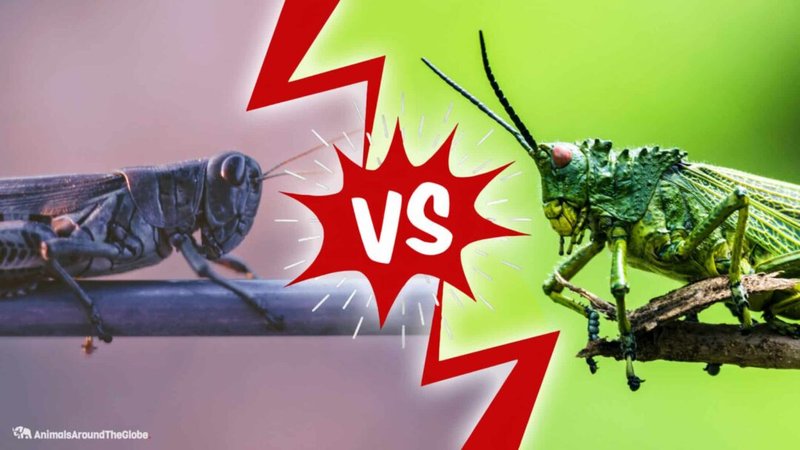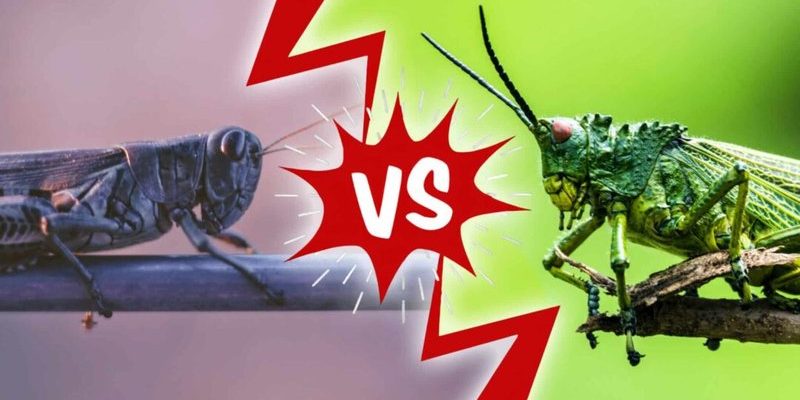
In this article, we’ll dive into the details of grasshoppers and a few of their counterparts, such as crickets and katydids. You might be wondering why it’s important to understand these differences. Well, grasping the variety in this particular insect family can deepen your appreciation for the little critters that share our environment. So, grab a cup of coffee, sit back, and let’s hop into the world of grasshoppers and their similar insects.
What Are Grasshoppers?
Grasshoppers are fascinating creatures belonging to the order Orthoptera. They’re recognized for their long hind legs, allowing them to make impressive leaps. Typically, they range in size from about half an inch to over four inches long. Grasshoppers are usually green or brown, blending seamlessly with the grass and foliage in their natural habitat. They play a vital role in the ecosystem—acting as both herbivores and a food source for birds and other predators.
You might notice grasshoppers have a distinct shape, with a cylindrical body and long antennae that can be just as long as their bodies. This helps them sense their environment and avoid predators. Their powerful legs aren’t just for show; they help them escape danger quickly. Picture this: you’re outside and suddenly see a bird—boom! That grasshopper leaps away in a flash, showcasing its amazing adaptability to survive in the wild.
Grasshoppers vs. Crickets
When comparing grasshoppers and crickets, the first thing you’ll notice is their sound. Grasshoppers create a chirping sound by rubbing their wings together, while crickets are known for their distinctive, melodious song. It’s like having a grasshopper as the cool neighbor who plays ambient music and a cricket who’s always hosting late-night karaoke sessions.
Both of these insects belong to the same order, but they differ in how they live and eat. Grasshoppers primarily munch on grass and leaves, while crickets are more opportunistic feeders, enjoying a diet that includes decaying plant material and even other insects. This difference in diet can affect the ecosystems they inhabit. For instance, while grasshoppers can sometimes cause damage to crops, crickets often help break down organic material, enriching the soil.
Their physical appearance also sets them apart. Crickets tend to have a more robust body and shorter antennae in comparison to grasshoppers. Also, crickets have a more pronounced sound-producing mechanism, which is more complex than that of grasshoppers. So, next time you hear these two making music, you’ll know what’s what!
Grasshoppers vs. Katydids
Another relative worth mentioning is the katydid, which often gets mistaken for grasshoppers due to their similar green appearance. Despite their similarities, there are some notable differences. Katydids have long, leaf-like wings that allow them to blend perfectly into their surroundings—just think of them as the ultimate masters of disguise!
Unlike grasshoppers, katydids produce a sound not by rubbing wings but by stridulating—rubbing their wings against each other to create a sound that’s often described as a “katy-did” call. This name makes sense when you think about it! Additionally, katydids typically feed on leaves and are more species-rich than grasshoppers. They thrive in trees and shrubs, lurking where grasshoppers don’t often venture.
In terms of size, katydids can sometimes be larger than grasshoppers, with some species boasting wingspans reaching over five inches. This size, combined with their impeccable camouflage, gives them a huge advantage when evading predators. So, if you’re out on an evening stroll and spot a green, leaf-like creature, take a second look—it might just be a katydid!
The Role of Grasshoppers in the Ecosystem
Grasshoppers play an essential role in the food chain as herbivores. They consume vast amounts of grass, which helps control plant growth and maintain healthy ecosystems. In turn, they become a substantial food source for various predators, including birds, reptiles, and mammals. This dynamic demonstrates how interconnected nature is, with each species fulfilling a role.
Moreover, when grasshoppers eat, they help in seed dispersal, allowing plants to grow and thrive. So, they’re not just munching on your garden—they’re also contributing to the growth of future plant life in their environment. It’s a pretty neat way of giving back to the planet and ensuring that ecosystems remain stable.
Interestingly, grasshoppers can also impact agricultural systems. In vast numbers, they can become pests, damaging crops and leading to economic losses for farmers. This dual nature makes studying grasshopper populations crucial for agricultural practices and environmental management. Balancing their ecological roles and mitigating their potential as pests is key to sustainable farming.
Similarities and Differences in Life Cycles
When you compare the life cycles of grasshoppers, crickets, and katydids, you’ll find both unique traits and familiar patterns. All three undergo a process called incomplete metamorphosis, which means they develop through several stages without a pupal phase. This process consists of three key stages: egg, nymph, and adult.
Grasshopper eggs are laid in the ground, hatching into nymphs that resemble miniature adults but lack wings. They grow through a series of molts, shedding their exoskeletons as they get larger. Crickets and katydids follow the same pattern, but with slight variations in egg-laying and nymph behavior. For example, crickets tend to lay their eggs in moist soil, while katydids often place theirs on leaves.
The evolution of these stages shows how each species has adapted to its environment. For instance, grasshoppers often thrive in open fields and grasslands, while katydids prefer wooded areas. Understanding these life cycles helps us appreciate their roles in our ecosystems. Each stage of life is crucial for survival and contributes to the biodiversity we often take for granted.
As we close our exploration of grasshoppers and their similar insects, it’s clear that these tiny creatures have much to teach us about the natural world. From their distinct sounds and diets to their roles in the ecosystem, grasshoppers, crickets, and katydids each contribute to the delicate balance of nature.
Next time you hear a grasshopper chirping, consider how it fits into a larger family of insects. These comparisons remind us of the diversity that exists in even the smallest parts of our environment. So, whether you’re relaxing in your backyard or walking through a park, keep your eyes peeled for these amazing little critters. They may be small, but their impact is enormous!

